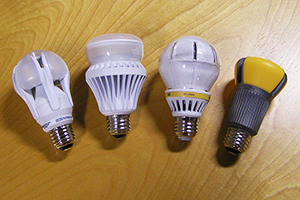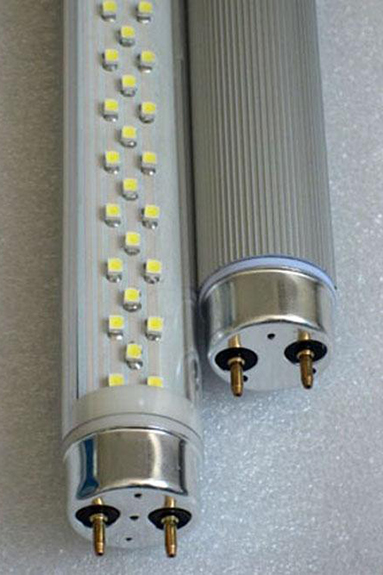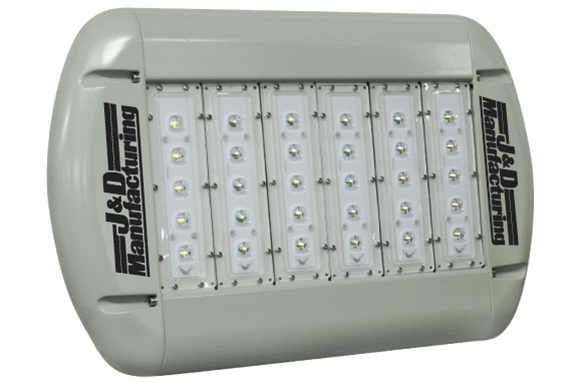This article was #20 of the Top 25 most well-read articles on www.progressivedairy.com in 2014. It was published in the Nov. 1, 2013 Extra e-newsletter and April 1, 2014 print issue. LED lights have been used for decades, but more recently, new designs are making them suitable to light the way in place of incandescent, fluorescent and high-intensity-discharge lamps. The greatest advantages of LED lighting are the extended life span that reaches far beyond that of incandescent bulbs and better energy efficiency.
An incandescent bulb has an efficiency of about 15 lumens per watt and lasts about 1,000 hours, while LED lamps range from 80 to 110 lumens per watt and have an average expected life of 25,000 to 100,000 hours. As far as application to dairy facilities, the question remains as to whether or not LEDs provide the same milk production benefits as other bulbs in a long-day lighting scheme. Research on this topic could soon be available.
:

Lighting technologies have been evolving rapidly over the past 10 to 15 years and are making another leap. Light Emitting Diodes or LED have been used for some 40-plus years as indicator lights in many electronic devices and have been adapted for general lighting.
Why? Because they have long life and are energy efficient. An incandescent bulb has an efficiency of about 15 lumens per watt and lasts about 1,000 hours, while LED lamps range from 80 to 110 lumens per watt and have an average expected life of 25,000 to 100,000 hours.
LED lamps use 50 percent less energy than compact fluorescent lamps and 80-90 percent less energy than halogen or incandescent bulbs. The table below lists the average efficiency and life for different lamp types.
They also have the side benefit of not containing mercury so accidental breakage and environmental contamination are less of a problem. LED lamps are made up of clusters of individual LEDs to produce a fixture with ample light output for general lighting. LED white lights are available in a broad spectrum of colors – warm white, soft white, cool white and daylight along with different colors – green, blue, red.
They are available in Edison base (screw-in – Photo 1), spot lights, flood lights, linear tubes and specialty lamps and are an instant on lamp – no warm-up required. LED lights are very directional which can help reduce wasted light in a barn whereas in a home or office diffuse or spreading light out is more desirable.
| Lamp type | Lumens/watt | Average life (hours) |
| Incandescent | 10-20 | 750-1,000 |
| Halogen | 12-21 | 2,000-6,000 |
| Mercury Vapor | 26-39 | 24,000 |
| Compact Flourescent | 45-60 | 6000-12,0000 |
| Metal Halide | 60-79 | 15,000-30,000 |
| T12 Fluorescent | 62-80 | 10,000-15,000 |
| High Pressure Sodium | 66-97 | 24,000 |
| T8 Flourescent | 76-93 | 15,000-20,000 |
| LED (Light Emitting Diode) | 80-110 | 25,000-100,000+ |
New LED lamps have been coming on the market almost monthly to meet many general lighting applications where we now use incandescent, fluorescent and high intensity discharge lamps.
The long life of LED is a major advantage with some having rated life of more than 100,000 hours – that is like buying a lamp that will last almost half of your life. If an LED lamp lasts 100,000 hours and is used eight hours per day, it should last about 34 years.

LED lamps are cold-loving and have increased light output as the temperature drops, so excellent applications are free stall barns and yard lighting. The light output of fluorescent lamps can decrease 50 percent or more in cold weather.
LEDs are sensitive to heat but that is rarely a problem in the upper Midwest due to ambient air temperatures. The exception would be using an LED lamp in a sealed fixture such as a jelly jar enclosure that isn’t designed to dissipate heat.

LED tube lamps, Photo 2, are designed to replace linear fluorescent lamps. A 20- or 23-watt LED will emit about the same amount of light as a 28-watt T5, 32-watt T8 or 40-watt T12 lamp but may last 5 to 10 times longer.
High bay LED lamps, Photo 3, are also available to replace mercury vapor, metal halide lamps or multi-tube fluorescent fixtures.
There have not been any scientific studies of LED lighting published to date for photoperiod length manipulation for dairy cattle to increase milk production, only a demonstration project in Oklahoma that had positive results.
There is a study underway in New York State looking at the use of LED lights versus T8 fluorescent lamps using three barns on the same farm, one with LED lamps, one with T8 fluorescent lamps that both run for 18 hours per day, and a third barn with T8 fluorescent lamps operated on a “conventional” lighting interval.
Test results will not be available from this study until late 2014. The general expectation is that LED lamps would work fine for photoperiod manipulation, although some have pointed out that the wavelength distribution is different than other lights that have been used in past photoperiod manipulation trials. Future trials will hopefully answer that question. PD
Scott Sanford is senior outreach specialist for the Department of Biological System Engineering, University of Wisconsin – Madison.
PHOTOS
Photos courtesy of Scott Sanford.






